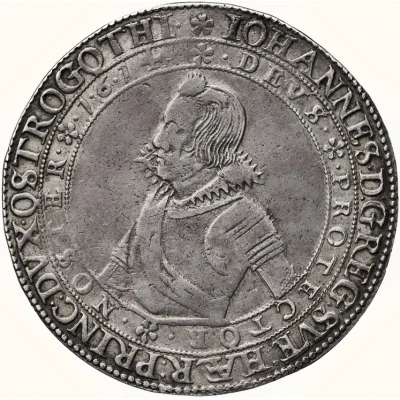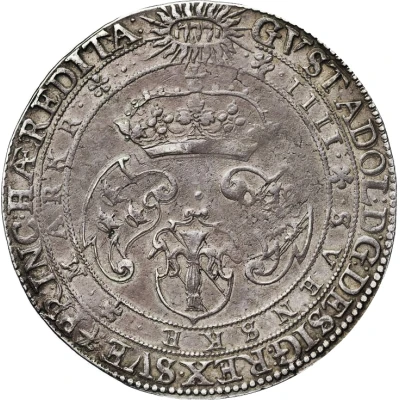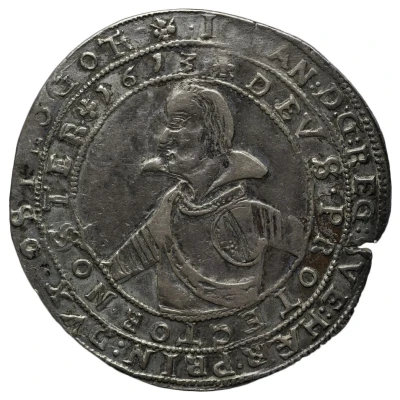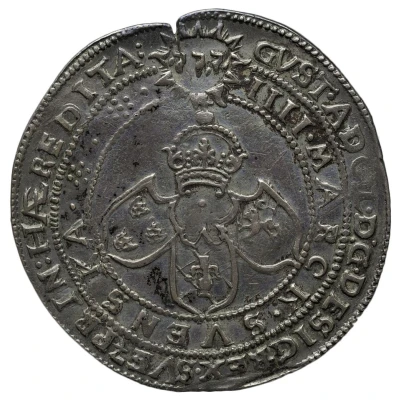


© Stacks Bowers
4 Mark - Johan, Duke of Östergötland Type III
1614 year| Silver (.821) | 19.28 g | 41.6 mm |
| Issuer | Duchy of Östergötland (Sweden) |
|---|---|
| Duke | John (Johann) (1606-1618) |
| Type | Standard circulation coin |
| Year | 1614 |
| Value | 4 Mark = ⅔ Riksdaler |
| Currency | First riksdaler (1598-1665) |
| Composition | Silver (.821) |
| Weight | 19.28 g |
| Diameter | 41.6 mm |
| Shape | Round |
| Demonetized | Yes |
| Updated | 2024-10-07 |
| Numista | N#156586 |
|---|---|
| Rarity index | 95% |
Reverse
Crown above three complex-shaped shields in a triangular frame: above two shield are bent to the center of the coin: the left one has the Three Crowns of Sweden, the right one has the Folkungs Lion. Below the two is a shield with Vasa Arms. Crown and three shields are encircled by two lines of text, with radiant name of Jehovah in hebrew in upper position, inside the text lines. Inner line of text is value in letters.
Scripts: Hebrew, Latin
Lettering:
( יהוה ) GVST : ADOL : D:G : DESIG : REX : SVE & PRINC : HÆREDITA :
·*· IIII ·*· SVENSKA ·*· MARCK ·*·
Translation: Gustav (II) Adolf by the Grace of God, hereditary prince and designed King of Sweden.
Comment
Johan apparently had no desire to rule Sweden as he renounced his right to succession two times. The first time was in 1604 at the age of 15 with the second being 1611. Both times with promises of several duchies to be added to his domain. Though he never ruled Sweden as king he was a member of the state government acting as regent while King Charles IX was away warring with Livonia. Before dying in 1618 he nearly ruined the economy of his duchy leaving immense debts for lavish spending and the building of Johannesburg Castle, but died before construction was finished.Interesting fact
One interesting fact about this coin is that it was minted during a time of great change in Sweden. The Duke of Östergötland, Johan, was a prominent figure in the Swedish nobility and played a significant role in the political and economic developments of the time. The coin's minting was likely a reflection of the growing influence of the Swedish nobility and the increasing importance of trade and commerce in the region. Additionally, the use of silver in the coin's production indicates the value placed on this precious metal during this period.

